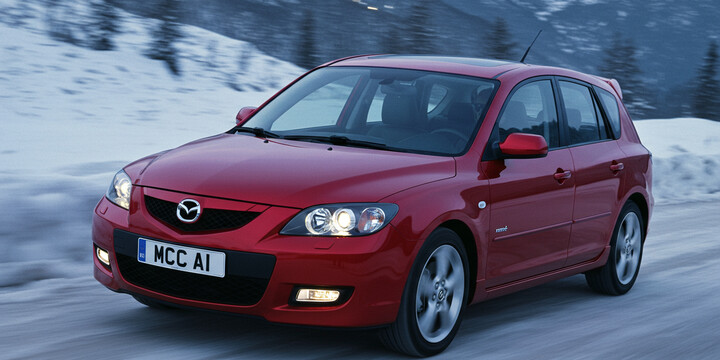
MAZDA 3 (2004-09) 5DR HATCHBACK 2.0 D 143 TS2
The MAZDA 3 (2004-09) 5DR HATCHBACK 2.0 D 143 TS2 is a popular compact hatchback that fits well into the UK market for drivers seeking a reliable, stylish, and practical car. Its 5-door design makes it ideal for everyday family use, commuting, or city driving, offering good space and ease of access. Known for its sporty looks and engaging driving experience, the Mazda 3 stands out with its sleek exterior and confident handling, making it a favourite among those wanting a fun yet functional vehicle.
This model is often appreciated for its fuel efficiency and reliability, making it an attractive choice for first-time drivers, small families, or budget-conscious commuters. Compared to rivals in its class, the Mazda 3 is known for its balanced combination of performance, economy, and distinctive design. With an average valuation of around £1,473 and a typical mileage of over 124,000 miles, it’s a car that has seen regular use but remains popular among used car buyers. If you're considering a well-rounded hatchback that offers style, practicality, and reasonable running costs, the Mazda 3 (2004-09) 5DR HATCHBACK 2.0 D 143 TS2 is worth your attention.

average use

The most recent mileage recordings for the Mazda 3 (2004-09) 5DR Hatchback 2.0 D 143 TS2 show a fairly evenly distributed spread across several mileage ranges. Notably, the 100,000 to 110,000 mile range accounts for the largest portion at 36.4%, indicating that many of these vehicles are reaching or surpassing 100,000 miles, which is common for vehicles of this age. There is an even distribution in other ranges such as 70,000 to 80,000, 120,000 to 130,000, 130,000 to 140,000, 160,000 to 170,000, and 20,000 to 30,000 miles, each representing around 9.1%. This suggests a diverse mileage profile among these vehicles, with no single range overwhelmingly dominant apart from the 100k-110k group.

vehicle values

Based on the private sale valuation data for the Mazda 3 (2004-09) 5DR Hatchback 2.0 D 143 TS2, the majority of vehicles are sold within the £1,000 to £2,000 price range, accounting for approximately 91% of private sales. Only about 9% of vehicles sell in the £2,000 to £3,000 range. This suggests that most cars of this model and spec are valued as budget options in the private sale market, indicating they are typically more affordable and possibly older or with higher mileage.

production years

The data indicates that among the sampled Mazda 3 models (2004-2009), the majority of vehicles manufactured are from 2008, accounting for 54.5%. Vehicles from 2007 also make up a significant portion at 45.5%. Notably, there are no vehicles from other years within this sample, suggesting that the 2008 and 2007 models are the most prevalent in this particular dataset.

colour popularity

The data indicates that the most common main paint colour for the Mazda 3 (2004-09) 5-door hatchback 2.0 D 143 TS2 is Silver, accounting for 36.4% of the sample. The remaining colours are relatively evenly distributed among Blue (9.1%), Grey (18.2%), Black (18.2%), and Red (18.2%). Notably, Silver is significantly more popular than any other colour, suggesting a preference for this shade among owners of this model during the specified period.

ownership cycle

The data indicates that for the Mazda 3 (2004-09) 5-door hatchback 2.0 D 143 TS2 model, the majority of vehicles (27.3%) have had four registered keepers. Additionally, significant proportions have had two (9.1%), three (18.2%), and five (18.2%) keepers. Remarkably, smaller groups have had higher numbers of keepers, such as 10 and 11, each comprising 9.1%. This spread suggests a relatively diverse ownership history with no dominant number of keepers, potentially reflecting how the vehicle is used and resold over time.

engine choices

Based on the available data for the Mazda 3 (2004-09) 5DR Hatchback 2.0 D 143 TS2, all recorded vehicles are equipped with diesel engines, representing 100% of the sample. However, there is no specific information provided regarding engine capacity, as it is marked with a 100% entry under the year 1998, which appears to be a general or placeholder reference. Overall, the vehicles in this model period are consistently diesel-powered, with no variation indicated in fuel type.












